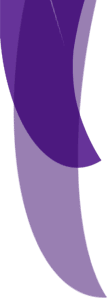|
In this first lesson you will learn about some common terms that go with the Egyptian language and you will meet the "monolaterals", or what is sometimes called the Egyptian alphabet, solely for the reason that they are one-consonant signs.(Hey!I just did two things at once, defined the word "monolateral" and finished that sentence!)Anyways, here are the terms:
Before I tell you the types of signs, I'll tell you one important term:transliteration. That,simply put, means that the Egyptian language has more consonants than ours, so we have a special alphabet to deal with those consonants. A sign's transliteration is one way to identify that sign, so while it may seem useless, you should know each sign's transliteration, which, unless further notified, is the letter by the sign.
Ideogram-(look at the name:Ideo-idea Gram-picture or sign. Hence, idea sign.) An ideogram is simply a picture of the word it describes. Most of the time but not all,it will have a vertical line under it(the sign) to indicate that it is being used as an ideogram.Ex.-r r That is the ideogram for "mouth", although, like most other signs it can be used other ways, too.
Phonogram-(Phono-sound Gram-sign) a phonogram is called a "sound sign" because it expresses the "rebus principle".(A rebus is when it has a picture of an eye to stand for the word "I".) For example, if we used phonograms to write, we would write the word belief with a picture of a bee and a picture of a leaf.
Determinative-A determinative is a kind of defining sign that is used at the end of a word to help find the meaning of it. Since the hieroglyphic language has no punctuation in words or sentences, this is useful to find the ends of words and sentences.Ex.- ! That is the determinative for man or things to with man, and one way it could be used is to go at the end of a name to verify whether that person is a man or woman.(More on this later)
|  |
 |  |
|
Back to the monolateral bit. As I said before, a monolateral is simply a sign that stands for one consonant.There are also trilaterals and bilaterals, which
are signs that stand for three consonants and signs that stand for two consonants.
Now you will learn how you tell from which direction to read read the hieroglyphs. The Egyptian script was very flexible, which was one reason that helped it survive for so long. It could be written from left to right, right to left, or from up to down in columns, although it was never written from the bottom up.
How do you tell which way to read?Look at the text below for the first example:
m m
The best way to tell is by looking at glyphs that depict animals or people. If they are facing towards the left, you read from left to right. If they are facing the right, you read from right to left. If they're in columns, well, I think you can figure that out. There is also another way to tell which way to read the glyphs. The picture below will show you another way:

Look at the faces. The hieroglyphics follow the direction of the face that they are closest to or are describing.(Depending on the scene, it might be the words a person is saying) That is the only other way that I know of to tell which way to read the hieroglyphs from. On the next the column, I'll wrap up this lesson and give you the first assignment, which is fairly simple.
|
|
 |  |
|  |
|
Now you learn the basic monolateral alphabet and their transliteration, and their pronunciation(in that order):
a- a a
A- A a
b- b b
d-d d
D-D dj
f-f f
g-g g/j
h-h h
H-H h
x-x kh
X-X kh
i-i i/a
y-y y
w-w w/u
p-p p
m-m m
n-n n
r-r r
s-s s
z-s s
S-S sh
k-k k
q-q k
t-t t
T-T tj
Excercise:Spell your name using the monolaterals. The Egyptians spelled by phonetics(NOT by letters) so you don't necessarily use the same amount of signs as letters.For example, take my name:
Michelle
The way it actually sounds is "Mishell". So,it would be like this:
miS@
miSl
But for one other feature:Egyptian scribes,whenever they could, arranged the words in a block. Then, it would look like this:
S
mi@
I'm afraid that's the best I can do, because I can't draw the glyphs at all in Paint.Also,though, the name would have one more feature:a determinative to tell whether the named person is a boy or girl.
Boy: !
Girl: _
That's all for the first lesson!
|
|
|




